Data Block is a structure of different variables a user configures. In the development system, Data Block is added to a project root or to a nested group.
Function Block - is a variable structure as well as SCL (ST) code.
The following is an example of how to create and configure a new block using the Data Block example. Function Block is created and configured similarly.
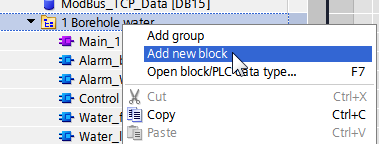
You should define a block type, a block name and a method of block numeration (a block number must be then specified in Multi-Protocol MasterOPC Server in the Region textbox):

Using the Properties command from the context menu of the data block, open the respective tab and set off the Optimized block access flag (otherwise Multi-Protocol MasterOPC Server will not interrogate PLC):
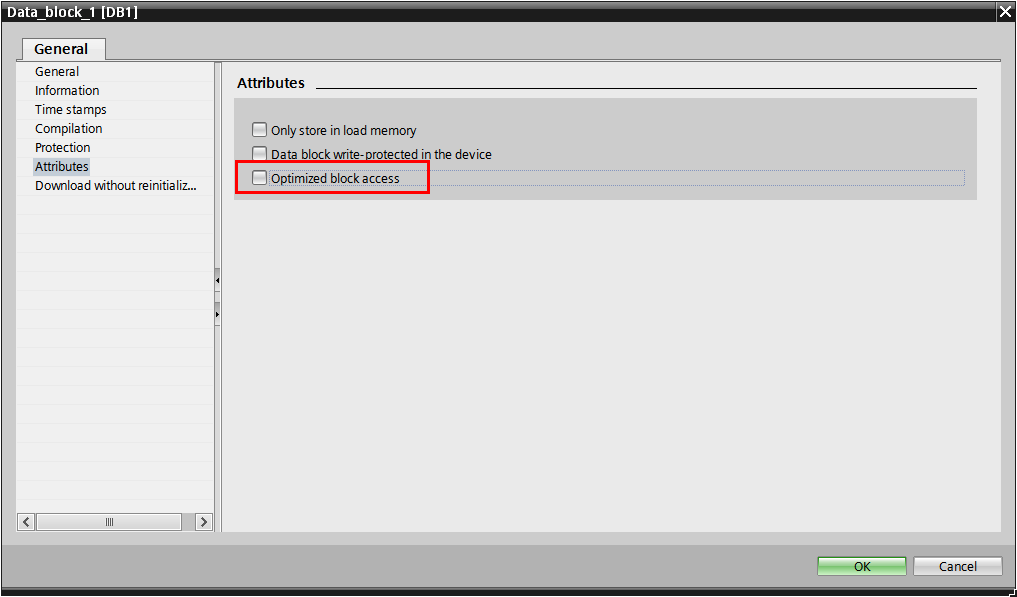
After that, variables of types required are added to a Data Block table. A PLC program will operate with such variables, and Multi-Protocol MasterOPC Server will be able to interrogate them.
As an example, let’s view getting data from the block Data_block_1 (block number is 1):
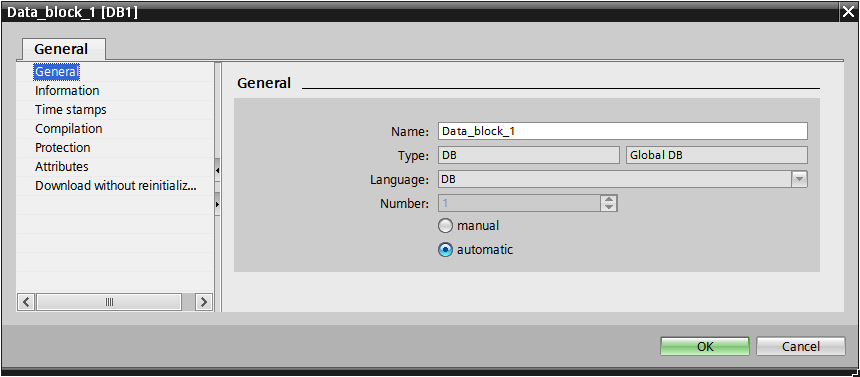
The data block has the following table of variables:

A data type and a byte address of variables can be known from that table (from the columns Data type and Offset respectively)
Add the first variable (Static_1) to Multi-Protocol MasterOPC Server. Add a tag and configure its properties according the table (region – DB, block number – 1, data type – Word, byte address – 0):
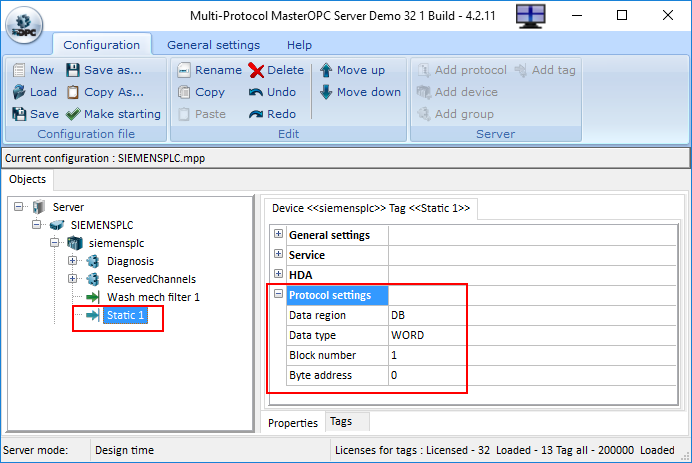
Add the next variable (Static_2). A region, a data type and a block number are the same as for Static_1, and a byte number is 2:

Add Static_3 (block number – 1, data type – bool, byte address – 4, bit number – 0 (because of we retrieve one bit)):
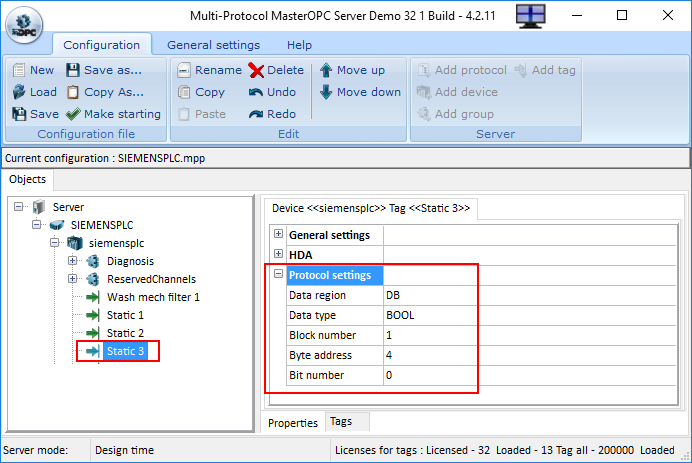
Static_4 has the same parameters, but a bit number is 1.
Add Static_5 (region – DB, data type – Word, block number – 1). The byte 4 is already occupied by two logical variables, and the address 5 cannot be used (variables of 2 bytes and more must be stored in even addresses), therefore set the next even address – 6:

If variables are added to a structure (a variable of the Struct type), the Offset column contains a variable address with respect to an initial address of the structure. Therefore, a variable address equals a sum of the offset and the initial structure address. For instance, the address of Static_5 equals 8 (6 is the initial address of the StaticGroup2 structure, and 2 is the variable address in the structure):

The table below shows data types Multi-Protocol MasterOPC Server supports, and their dimensions.
Data type |
Dimension |
|---|---|
bool |
1 bit |
byte |
1 byte |
char |
1 byte |
wchar |
2 bytes |
sint |
1 byte |
usint |
1 byte |
word |
2 bytes |
int |
2 bytes |
uint |
2 bytes |
dword |
4 bytes |
dint |
4 bytes |
udint |
4 bytes |
real |
4 bytes |
lreal |
8 bytes |
string |
256 bytes |
wstring |
512 bytes |
Date |
2 bytes |
TOD |
4 bytes |
Time |
4 bytes |
DT |
8 bytes |
S5Time |
2 bytes |